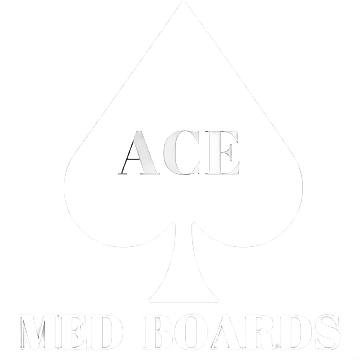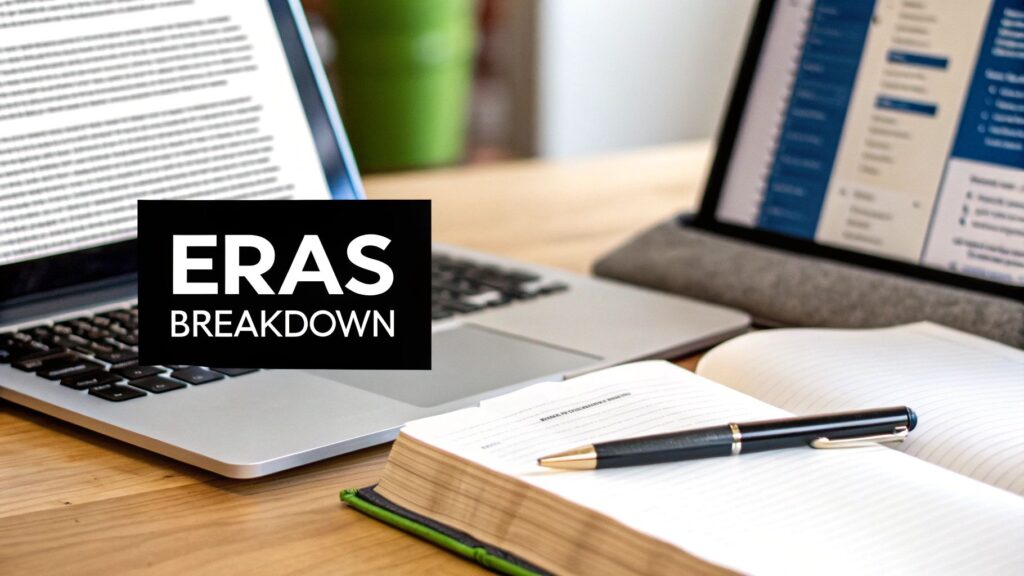The Electronic Residency Application Service (ERAS) is more than a standardized form; it's the primary vehicle for telling your unique story to residency program directors. While grades and board scores are crucial, your application's narrative components, from the personal statement to activity descriptions, are where you transform from a set of numbers into a compelling candidate. Mastering this narrative requires a strategic approach, turning each section into an opportunity to highlight your suitability for their program.
This guide moves beyond generic advice. We will dissect a diverse collection of sample ERAS application components, providing a behind-the-scenes analysis of what makes them successful. You will find detailed examples for medical residency, fellowships, and specialty-specific applications, including those for IMGs and osteopathic candidates. The goal is not for you to copy these examples, but to understand the strategic thinking behind them. We will break down why certain phrases work, how experiences are framed for maximum impact, and how to articulate your journey effectively.
A critical element of a strategic ERAS application is the ability to convey your experiences and aspirations clearly. Developing strong effective written communication skills can significantly enhance your personal statements and activity descriptions. By examining these curated samples, you will learn to apply proven tactics to your own application, ensuring every entry works to secure you an interview.
1. Medical Residency Application (ERAS)
The Electronic Residency Application Service (ERAS) is the centralized online portal nearly every medical student in the United States uses to apply for residency positions. Managed by the Association of American Medical Colleges (AAMC), it acts as a unified system that transmits your complete application package-including your MyERAS application, personal statements, letters of recommendation (LoRs), medical school transcript, and USMLE/COMLEX scores-to your selected residency programs.
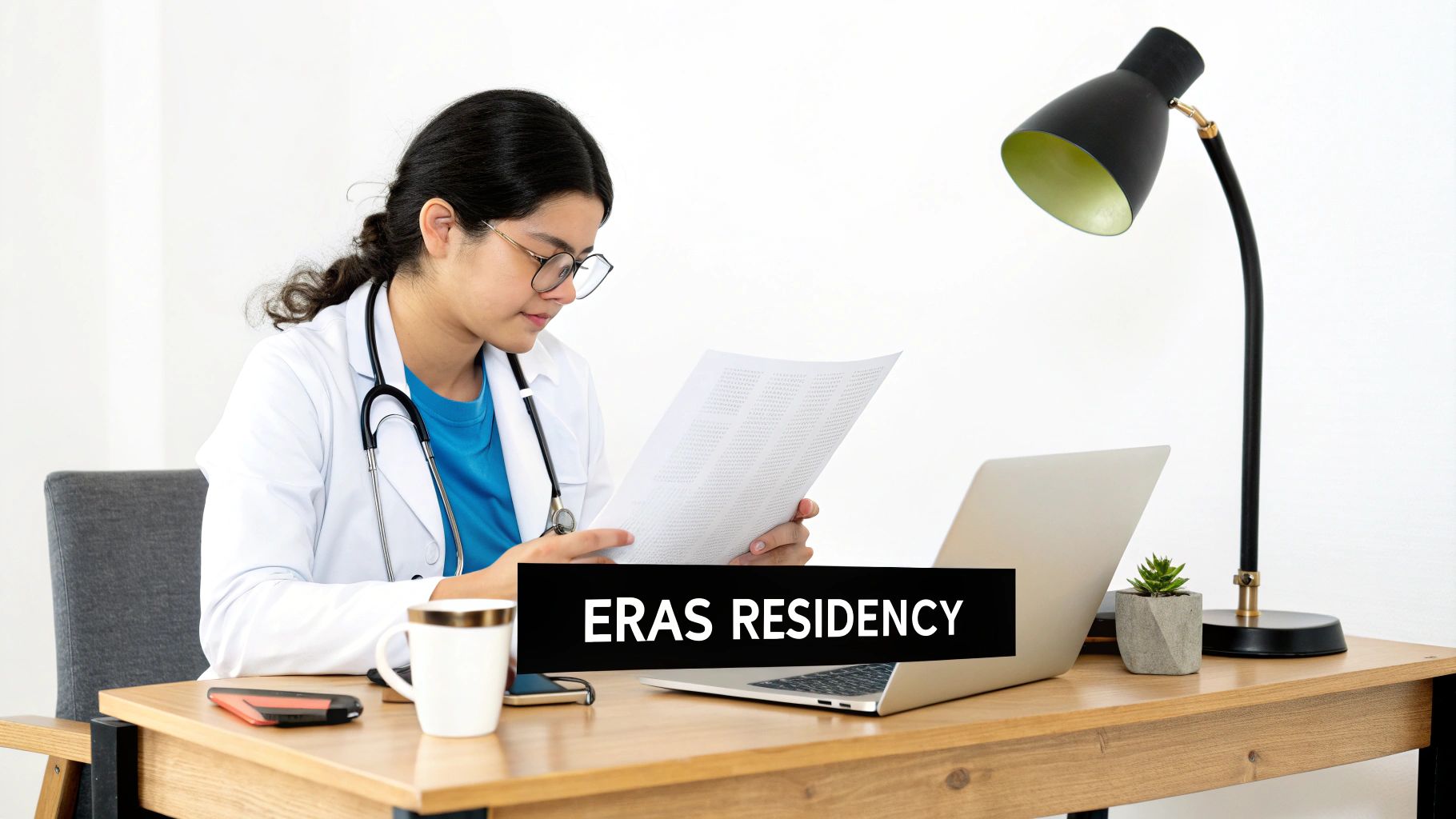
Understanding the ERAS platform is the foundational first step before you can even begin to think about crafting the perfect sample ERAS application. Its function is to streamline what would otherwise be an impossibly complex process of sending unique applications to dozens or even hundreds of individual programs. Each year, over 40,000 applicants use the system, which supports applications to all ACGME-accredited programs across more than 38 specialties.
Strategic Importance of ERAS
Mastering the ERAS platform is non-negotiable for a successful residency match. Because it's a standardized system, your ability to stand out depends entirely on the quality of the content you input. Every section, from the main application form to your activities descriptions, is an opportunity to impress program directors.
Key Insight: Program directors review thousands of applications. An ERAS application that is incomplete, contains errors, or is poorly formatted reflects negatively on your attention to detail-a critical trait for any physician.
Your goal is to use the platform's structure to your advantage by presenting a compelling, cohesive narrative of your journey and qualifications. A well-prepared application can secure more interview invitations, which are essential for matching. As you plan your application strategy, it is also wise to prepare for the next step; you can find excellent medical school interview tips to help you succeed once your application has captured their attention.
Actionable Tips for ERAS Success
- Start Early: Begin compiling your CV, drafting personal statements, and identifying LoR writers at least 3-6 months before the ERAS season opens in June.
- Certify with Confidence: Once you certify and submit your application, you cannot make changes to most sections. Proofread every single entry multiple times before hitting that button.
- Optimize Your Activities Section: Use the limited character counts wisely. Frame your experiences to highlight leadership, research skills, and commitment to your chosen specialty. We will explore specific examples of this later in this article.
2. Fellowship Application (ERAS)
For physicians who have completed residency, the Electronic Residency Application Service (ERAS) serves as the gateway to the next stage of specialization: fellowship training. This system, also managed by the AAMC, mirrors the residency application process but is tailored for physicians applying to advanced subspecialty programs. It streamlines the submission of a more mature and specialized application package to highly competitive fellowship positions across the country.
The fellowship application leverages the same ERAS platform, but the content and strategy shift significantly. Applicants are no longer undifferentiated medical students; they are practicing physicians with several years of clinical experience. The focus moves from general potential to demonstrated interest and expertise in a specific subspecialty, such as cardiology, gastroenterology, or orthopedic sports medicine. A strong fellowship application must showcase advanced clinical skills, a focused research portfolio, and a clear career trajectory within the chosen field.
Strategic Importance of ERAS for Fellowships
Securing a fellowship position is often more competitive than matching into residency. Program directors are looking for candidates who are not only competent physicians but also a perfect fit for their niche program. Your ERAS fellowship application is your primary tool to prove you are that candidate. Every component, from your updated CV to your fellowship-specific personal statement and letters of recommendation from subspecialty attendings, must work together to build a compelling case.
Key Insight: Fellowship program directors evaluate your application for evidence of deep, sustained interest in their subspecialty. A generic application recycled from your residency days will be immediately obvious and likely discarded. Customization is paramount.
Your goal is to demonstrate that your residency training and extracurricular pursuits have strategically prepared you for this specific fellowship. A well-crafted sample ERAS application for fellowship can be a powerful guide, but its true value lies in learning how to adapt its principles to reflect your unique journey and specialized qualifications, thereby securing those crucial interview invitations.
Actionable Tips for Fellowship ERAS Success
- Plan During Residency: Begin identifying fellowship mentors and engaging in subspecialty-specific research early in your residency. Your PGY-2 year is the ideal time to start this focused preparation.
- Secure Subspecialty LoRs: Letters of recommendation from well-known faculty within your target subspecialty carry immense weight. Cultivate these relationships throughout your residency training.
- Tailor Every Component: Write a unique personal statement for each subspecialty you apply to. Highlight specific experiences, research projects, and clinical cases that confirm your commitment and suitability for that field. Your activities section should also be updated to emphasize relevant accomplishments.
3. International Medical Graduate (IMG) ERAS Application
For international medical graduates (IMGs), the Electronic Residency Application Service (ERAS) is the essential gateway to securing a U.S. residency position. While the platform is the same one used by U.S. medical graduates, the IMG application process involves several additional, critical steps managed through the Educational Commission for Foreign Medical Graduates (ECFMG). The ECFMG acts as the designated dean's office for IMGs, responsible for verifying credentials and transmitting supporting documents like medical school transcripts and performance evaluations to ERAS.
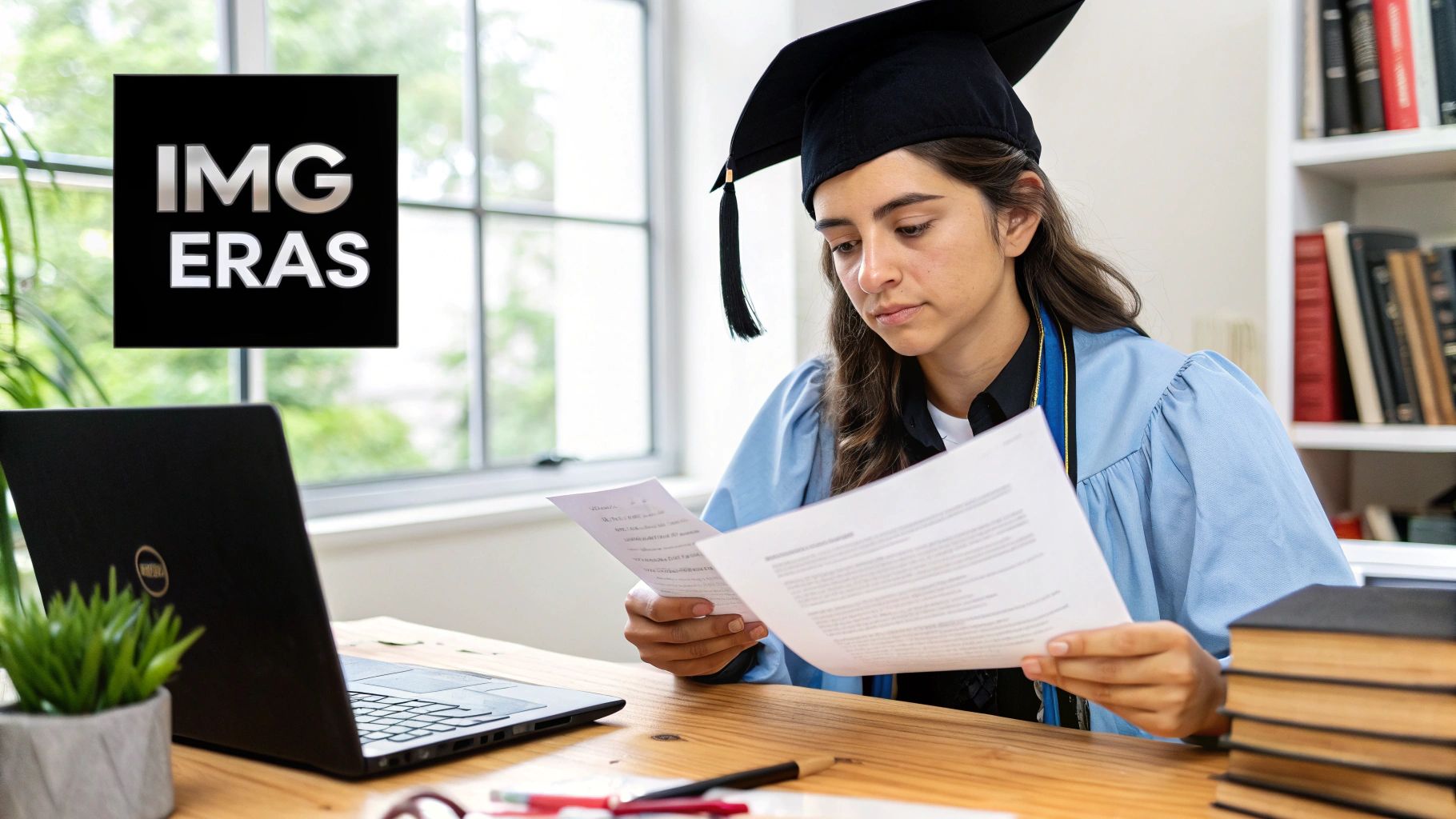
The IMG journey is uniquely challenging, as applicants must not only demonstrate clinical excellence but also navigate a complex verification system and prove their skills are equivalent to their U.S. counterparts. Each year, thousands of IMGs, including graduates from Caribbean medical schools and established international physicians, successfully match into U.S. programs. Their success hinges on a meticulously prepared sample ERAS application that addresses potential red flags and highlights unique strengths.
Strategic Importance of ERAS for IMGs
For an IMG, the ERAS application is more than a summary of qualifications; it's a strategic tool to overcome inherent biases and demonstrate readiness for the U.S. healthcare system. Program directors look for specific evidence that an IMG candidate can seamlessly integrate into their program. This includes high USMLE scores, U.S. Clinical Experience (USCE), and a compelling narrative of why they are pursuing training in the United States.
Key Insight: An IMG's ERAS application must proactively answer the question, "Why should we choose you over a U.S. graduate?" Every section must be optimized to showcase adaptability, resilience, and a strong, tangible connection to U.S. medicine.
Your personal statement is a prime opportunity to build this connection. Crafting a powerful story about your motivations and experiences is crucial. For guidance, reviewing a high-quality sample personal statement for medical school can provide foundational insights into effective storytelling, which you can then adapt for your residency application.
Actionable Tips for IMG ERAS Success
- Start ECFMG Certification Early: The ECFMG certification process is lengthy and requires meticulous documentation. Begin this process at least 12-18 months before the application season to avoid delays.
- Secure U.S. Clinical Experience (USCE): Hands-on clinical experience in a U.S. hospital setting is arguably the most important credential for an IMG. Prioritize rotations that offer strong letters of recommendation from U.S. physicians.
- Target Programs Strategically: Research programs with a history of accepting IMGs. Use resources like FREIDA and AMA Residency & Fellowship Database to identify visa-sponsoring and IMG-friendly programs, increasing your chances of securing interviews.
4. Osteopathic Medicine ERAS Application
Following the single accreditation system merger in 2020, osteopathic medical students (DOs) now use the same Electronic Residency Application Service (ERAS) as their allopathic (MD) counterparts to apply for ACGME-accredited residency positions. This marked a significant transition away from the historically separate AOA match system, integrating graduates from schools like A.T. Still University and Touro College of Osteopathic Medicine directly into the main residency match. The core application process is identical, but the strategy for a DO applicant involves unique considerations.
A successful osteopathic sample ERAS application must effectively translate the distinct principles of osteopathic training into a language that resonates with all program directors, many of whom may have a predominantly allopathic background. This means showcasing the value of a holistic approach, osteopathic manipulative medicine (OMM), and a patient-centered philosophy within the standardized ERAS format. Graduates from institutions like Michigan State University College of Osteopathic Medicine or Western University of Health Sciences must strategically highlight these strengths.
Strategic Importance for DO Applicants
For osteopathic applicants, the ERAS application is a critical tool for bridging any perceived gap between DO and MD training. Your application must not only demonstrate clinical excellence but also articulate the unique advantages your osteopathic background brings to a residency program. It is your primary opportunity to show that your training in principles like the body's unity and self-healing capacity makes you a well-rounded and empathetic physician.
Key Insight: Many program directors, especially in highly competitive specialties or historically allopathic institutions, may not be fully familiar with the DO curriculum. Your ERAS application is your chance to educate them on the strengths of your training and how it enhances your candidacy.
A well-crafted application can level the playing field and even provide a competitive edge. By emphasizing skills in holistic patient assessment and musculoskeletal diagnosis, you present yourself as a candidate with an expanded clinical toolkit. This is particularly valuable when applying to programs with a strong osteopathic presence or those that value primary care and a comprehensive view of patient wellness.
Actionable Tips for Osteopathic Applicants
- Integrate Osteopathic Principles: Weave your DO philosophy into your personal statement and activity descriptions. Instead of just listing OMM as a skill, describe a specific patient encounter where your osteopathic approach led to a better diagnosis or outcome.
- Consider Both USMLE and COMLEX: While all ACGME programs accept COMLEX-USA scores, taking the USMLE series can provide a familiar data point for program directors and may be beneficial when applying to competitive specialties or historically MD-centric programs.
- Highlight DO-Specific Experiences: If you participated in OMM clinics, conducted research related to osteopathic principles, or held leadership roles in osteopathic student organizations, feature these prominently in your activities section to underscore your unique training.
5. Preliminary Year and Transitional Year ERAS Applications
Preliminary and Transitional Year (TY) programs are one-year positions designed as stepping stones for advanced residencies. A preliminary year offers foundational training in a specific field like medicine or surgery, often required by specialties such as dermatology, radiology, or anesthesiology. A transitional year provides a broader, multi-specialty clinical experience, fulfilling the prerequisite for many of the same advanced programs but with a more varied curriculum.
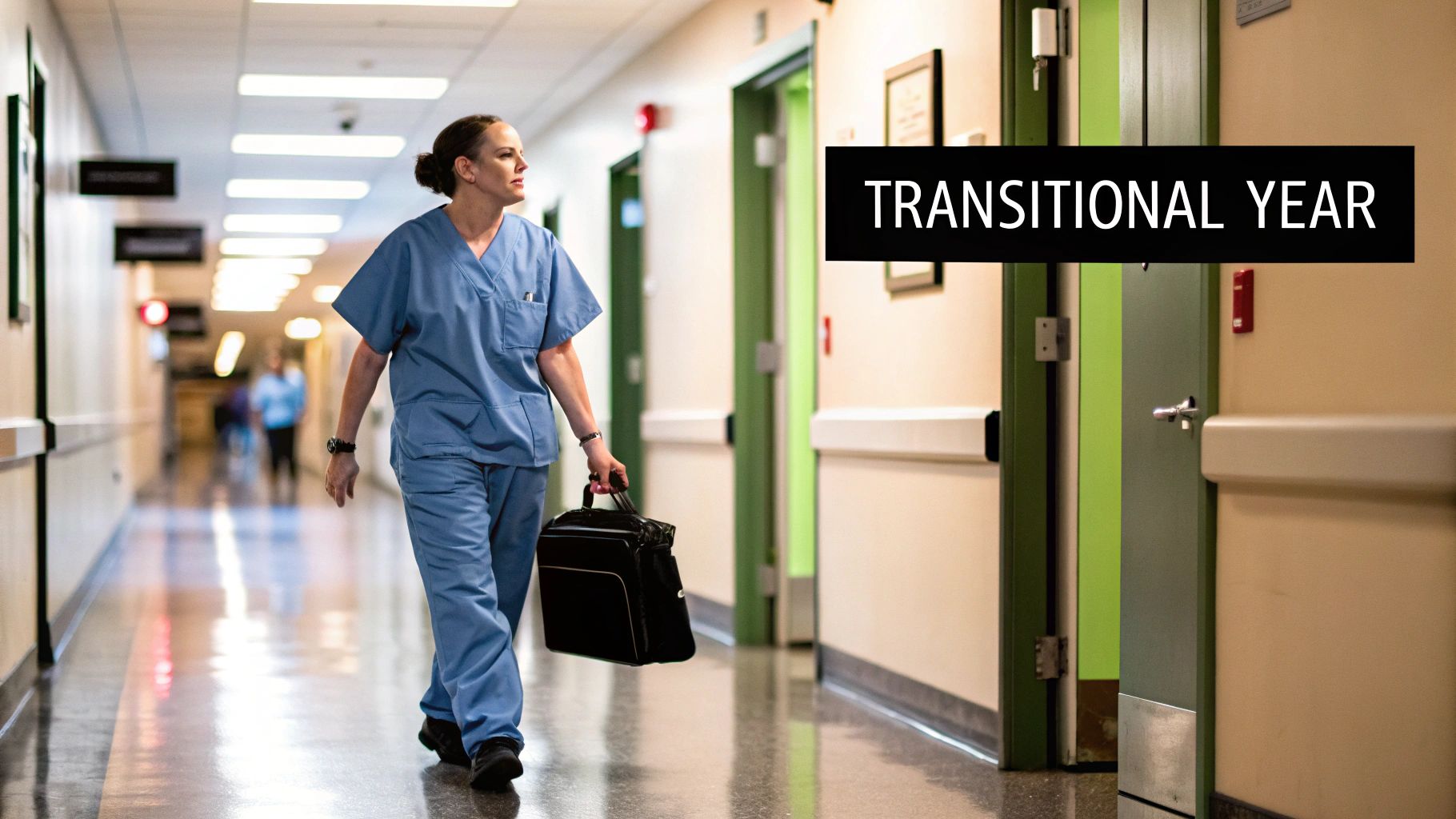
Crafting a sample ERAS application for these programs requires a dual focus. You must not only demonstrate your suitability for the one-year position but also clearly articulate your long-term commitment to your ultimate specialty choice. Program directors at institutions like the Mayo Clinic (for TY) or Johns Hopkins (for preliminary medicine) look for candidates who will excel in their intern year while being a strong future candidate for an advanced residency.
Strategic Importance of Preliminary/TY Applications
Applying to these programs is often a necessity for competitive specialties that have a "categorical" (full residency) and an "advanced" (starting in the second year) track. A well-executed preliminary or TY application is not just about securing an intern year spot; it's about positioning yourself for success in your desired field. Your performance during this year can significantly strengthen your future residency prospects.
Key Insight: Program directors for preliminary and TY programs understand their role is to prepare you for the next step. Your application must convey that you are a motivated, reliable, and capable physician-in-training who will represent their program well as you move on to your advanced specialty.
Your ERAS application should reflect this understanding. Tailor your personal statement and activities to show how this specific one-year program aligns with your career goals. For instance, a future radiologist might emphasize how a strong foundation in internal medicine from a top preliminary program will make them a better diagnostician.
Actionable Tips for Preliminary/TY Success
- Dual Personal Statements: Write a separate, tailored personal statement for your preliminary/TY applications. While your main statement focuses on your advanced specialty, this one should explain why you chose this specific type of intern year and what you hope to gain from it.
- Showcase Versatility: For transitional years, highlight experiences that show your ability to adapt and excel in various clinical settings. For preliminary years, align your experiences with that specialty (e.g., surgery-relevant research for a surgery prelim).
- Strategic LoRs: Obtain at least one strong Letter of Recommendation from a faculty member in the field of the preliminary program (e.g., an internal medicine LoR for a medicine prelim), even if your ultimate goal is different. This shows a genuine interest in the foundational training.
6. Specialty-Specific ERAS Applications (Dermatology, Ophthalmology, Radiation Oncology)
For highly competitive fields like Dermatology, Ophthalmology, and Radiation Oncology, the standard ERAS application is merely the entry ticket. A truly effective application for these specialties is a meticulously curated portfolio showcasing exceptional academic performance, extensive and relevant research, and a profound, demonstrated commitment to the field. This goes beyond a strong general application and requires a specialized, multi-year strategy.
These fields are often referred to as "lifestyle" or highly specialized disciplines, attracting a large number of top-tier candidates for a very limited number of positions. For example, applying for a dermatology residency at Stanford or an ophthalmology spot at Wills Eye Hospital requires a sample ERAS application that is not just excellent, but uniquely tailored to the program's specific research and clinical focuses. This level of preparation is what separates matched from unmatched applicants.
Strategic Importance of a Specialty-Focused Application
In these competitive arenas, program directors are looking for future leaders of the specialty, not just competent clinicians. Your application must tell a story of deliberate, long-term dedication. This means every activity, publication, and letter of recommendation should ideally align with your chosen field. A scattered application, even one with high scores, will be less compelling than a focused narrative.
Key Insight: For hyper-competitive specialties, your application isn't just a summary of your medical school years; it's the culmination of a strategic campaign. Program directors want to see evidence that you have been intentionally building a career in their field since early in your medical education.
The following bar chart illustrates the challenging match rates for these fields, underscoring the need for a superior application strategy.
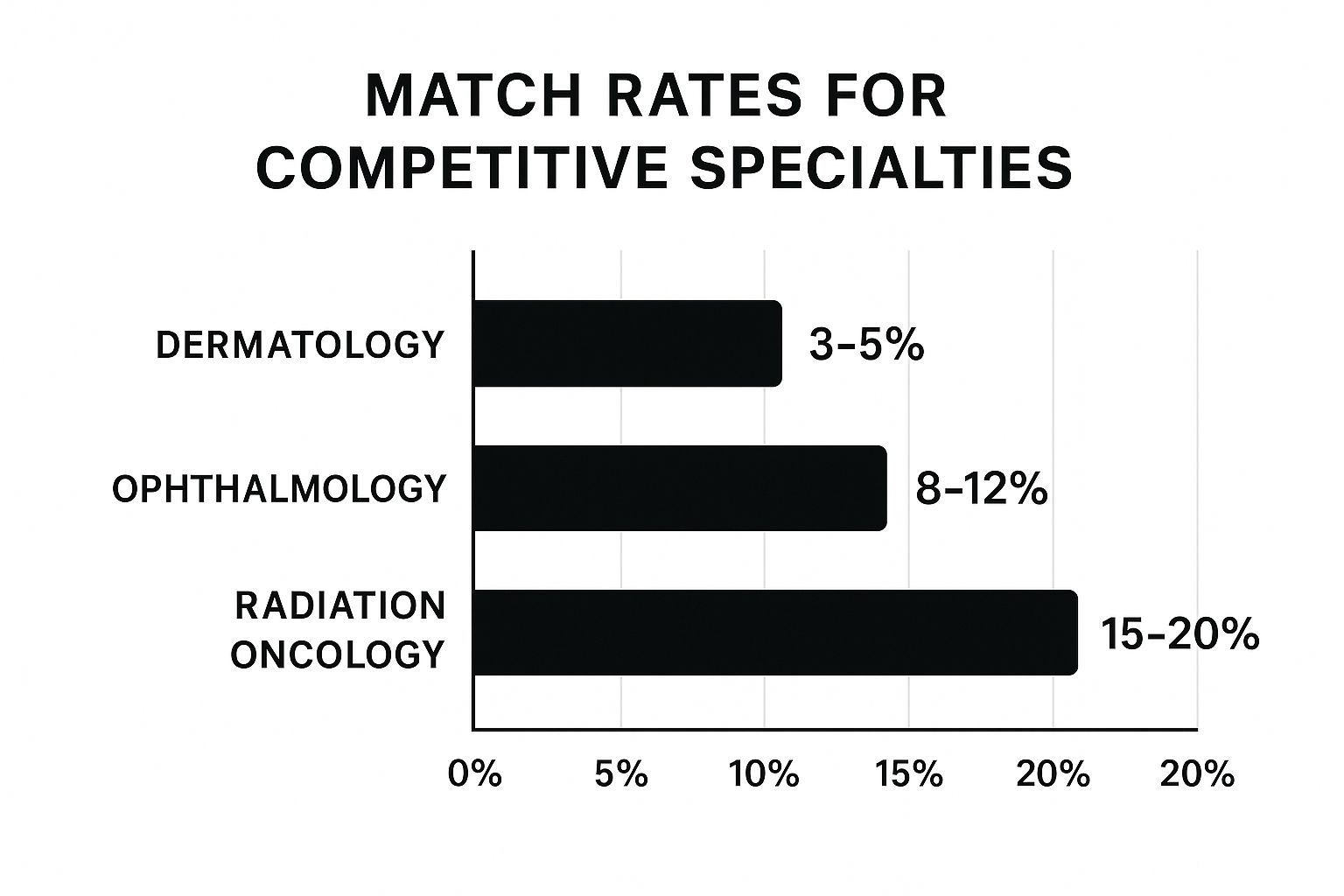
This visualization starkly highlights why a generic application is insufficient; with match rates often in the single or low double digits, only the most prepared and focused candidates succeed. To navigate these odds, understanding the intricacies of the process is crucial; you can find in-depth guidance on how to improve your chances in the residency match on acemedboards.com.
Actionable Tips for Competitive Specialties
- Plan Years in Advance: Begin research and seek mentorship in your chosen specialty during your first or second year of medical school. This provides the time needed to achieve meaningful results, like publications.
- Aim for Elite Metrics: While holistic review is touted, exceptional USMLE scores (often >250) and AOA honor society membership are soft requirements for many top programs in these fields.
- Network with Purpose: Attend national conferences, engage with faculty at your home institution and at away rotations, and build genuine relationships. Strong, specialty-specific LoRs are critical.
- Consider a Research Year: A dedicated research year can significantly strengthen your application by allowing you to secure first-author publications, present at conferences, and deepen your connections within the specialty.
6-Point ERAS Application Comparison
| Application Type | Implementation Complexity 🔄 | Resource Requirements 💡 | Expected Outcomes ⭐ | Ideal Use Cases 💡 | Key Advantages ⚡📊 |
|---|---|---|---|---|---|
| Medical Residency Application (ERAS) | Moderate; standardized, with deadlines and fees | Requires documents, letters, USMLE scores | High match rate; access to multiple residencies | Medical students applying to US residency programs | Centralized, standardized, real-time tracking, broad access |
| Fellowship Application (ERAS) | Moderate to high; specialty-specific and advanced docs | Research portfolio, board certification | Competitive subspecialty placement | Physicians applying for subspecialty fellowship | Streamlined subspecialty application, professional integration |
| International Medical Graduate (IMG) ERAS | High; additional certifications, visa, translations | ECFMG certification, visa docs, US clinical exp | Moderate match rate (~60%), with extra processing | Foreign medical graduates seeking US residencies | Standardized international process, credential verification |
| Osteopathic Medicine ERAS | Moderate; dual exam scores, osteopathic emphasis | COMLEX & USMLE scores, DO-specific docs | Access to ACGME residencies, increased competition | DO students applying post-2020 unified match | Larger pool access, integration with MD programs |
| Preliminary & Transitional Year ERAS Applications | Low to moderate; one-year programs, broad training | Clinical rotations, some research | Additional training year, prep for specialties | Candidates needing preliminary or broad-based training | Provides extra training, improves advanced specialty chances |
| Specialty-Specific ERAS Applications | High; extensive research, high scores, extra components | Research, high USMLE, specialty experiences | Low match rates (3-20%), high prestige | Competitive fields like dermatology, ophthalmology | Access to prestigious specialties, high earning potential |
Bringing It All Together: Your Checklist for a Winning Application
Navigating the Electronic Residency Application Service (ERAS) is one of the most demanding yet crucial steps in your medical career. Throughout this guide, we've deconstructed various components of successful applications, from personal statements to the granular details of the Work, Volunteer, and Research Experiences sections. By analyzing each sample ERAS application element, we've uncovered the strategies that transform a good application into a great one. The core lesson is clear: excellence lies in the details, strategic presentation, and authentic storytelling.
The most effective applicants do more than just list their accomplishments; they build a compelling narrative. They connect their experiences to their specialty choice, demonstrate growth over time, and showcase the specific qualities-like leadership, resilience, and compassion-that program directors actively seek. As we saw in the specialty-specific examples, tailoring your narrative to the values of fields like Dermatology or Radiation Oncology isn't just an option; it's a necessity.
Your Strategic Application Checklist
As you finalize your own materials, use this checklist to ensure you've applied the key principles we've discussed. This isn't just about avoiding errors; it's about proactively building a standout application.
- Unified Narrative: Does your personal statement introduce a central theme or story that is reinforced by your activities and letters of recommendation?
- Impact-Oriented Descriptions: Have you used the XYZ formula or a similar structure for your experience descriptions? Focus on what you did, the result it produced, and the skills you gained.
- Strategic Highlighting: Are your most significant experiences clearly marked? Have you used the "most meaningful" designations to draw attention to the activities that best define your candidacy?
- Clarity and Conciseness: Is every sentence purposeful? To ensure your personal statement and other written components stand out, mastering your professional writing skills is crucial. Avoid jargon and verbose language that can obscure your message.
- Specialty Alignment: If applying to a competitive field, does your application clearly answer the question, "Why this specialty?" Your passion and suitability should be evident throughout.
- Error-Free Submission: Have you meticulously proofread every single entry? Enlist trusted mentors, advisors, and peers to review your entire application for typos, grammatical errors, and formatting issues. A single mistake can signal a lack of attention to detail.
Mastering the art of the ERAS application is your final exam before residency interviews begin. It's the culmination of years of hard work, condensed into a digital portfolio that speaks for you. By leveraging the insights from each sample ERAS application we reviewed, you can move beyond simply listing your achievements and instead craft a powerful, persuasive case for your candidacy. Approach this process with the same diligence and strategic thinking you apply to patient care, and you will position yourself for success in the Match.
Crafting the perfect ERAS application is just one piece of the puzzle. Ensure your clinical knowledge is just as impressive with targeted, high-yield board preparation from Ace Med Boards. We specialize in helping you conquer the USMLE and COMLEX exams, providing the foundation you need to excel in residency and beyond. Visit Ace Med Boards today to see how our tailored study plans can help you achieve your goals.
